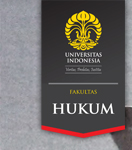Abstract
The conception of Intellectual Property Right (IPR) is generally misunderstood by among common people. In order to obtain a more comprehensive understanding of IPR, we may as well start with the most dominant point of view, namely that from the perspective of the State and Government.This point of view is dominant because the State and Government are the institutions which havethe authority to make law, to implement law and to interpret the law in the various forms of itsimplementation. A study of IPR can be taken from wider view, as cultural perspectivetake the approach of looking at various events related to the implementation of the laws concerned. It also provide various situations to analyze related to the implementation of Copyright Law in various regions all over Indonesia. Within current situation, after Indonesia has ratified the WTO/TRIPs, the consequence now is binding, politically, legally and economically, although we may freely provide the needs of our people, in this case : IPR protection system. There are of course many other things in the spirit of the Constitution and the Indonesian nation that can be explored further and applied in the IPR protection system. In the end, IPR as the part of the culture can be developed further by taking into consideration and looking into possibility that much suitable to the needs of Indonesian respective communities.
References
Abbott, Frederick. et al. The International Intellectual Property System:
Commentary and Materials, Part One. Kluwer Law International, 1999.
Abbott, Frederick. “Protecting First World Assets in the Third World: Intellectual
Property Negotiations in the GATT Multilateral Framework”, Vanderbilt
Journal of Transnational Law. Vol. 22, No.4, 198.
Aquinas, Thomas. The Summa Theologica: On the Essence of Law, (edited with an
introduction by Anton C. Pegis. (New York: The Modern Library, no year
indicated)Aquinas, Thomas. Summa Theologica, dalam Lord Lloyd of Hampstead,
Introduction to Jurisprudence, 3th ed. Praeger Publisher., 1972.
Curzon, L.B. Jurisprudence. London: Cavendish Publishing Limited, 1993.
Foster, Meika. “The Human Genome Diversity Project and the Patenting of Life:
Indigenous People Cry Out”, Canterbury Law Review. Vol. 7, 1999.
Kuntjaraningrat. Pengantar Antropologi. Jakarta: AksaraBaru, Cet.V, no year
indicated.
Ramanna, Anitha. “India’s Plant Variety and Farmers’ Right Legislation: Potential
Impact on Stakeholder Access to Genetic Resources”, EPTD Discussion
Paper No. 96, International Food Policy Research Institute. Washington:
January,2003.
Ritchie, Mark. et al. “Intellectual Property Rights and Biodiversity: The
Industrialization of Natural Resources and Traditional Knowledge”,
St.Johns Journal of Legal Commentary, Vol. 11, 1996.
Sardjono, Agus. Hak Kekayaan Intelektual dan Pengetahuan Tradisional.
Bandung:Alumni, 2010.
Sardjono, Agus. Membumikan HKI di Indonesia. Bandung: NuansaAulia, 2009.
Sumaryono, E. Etika Hukum: Relevansi Hukum Kodrat Thomas Aquinas.
Yogyakarta: Kanisius,2002.
Suwarsono & Alvin Y. So, Social Change and Development. Jakarta: LP3ES, 1994.
Recommended Citation
Sardjono, Agus
(2011)
"CULTURE ANDINTELLECTUAL PROPERTY DEVELOPMENT IN INDONESIA,"
Indonesia Law Review: Vol. 1:
No.
3, Article 1.
DOI: 10.15742/ilrev.v1n3.55
Available at:
https://scholarhub.ui.ac.id/ilrev/vol1/iss3/1

